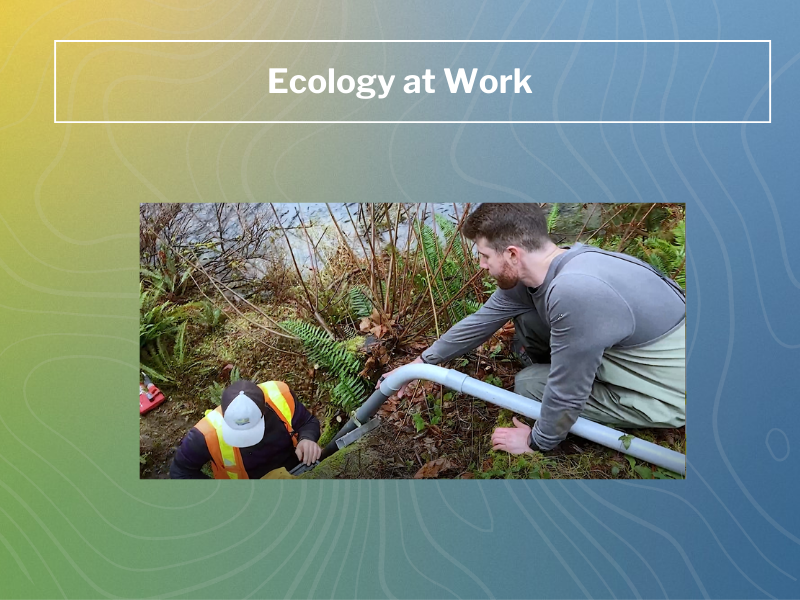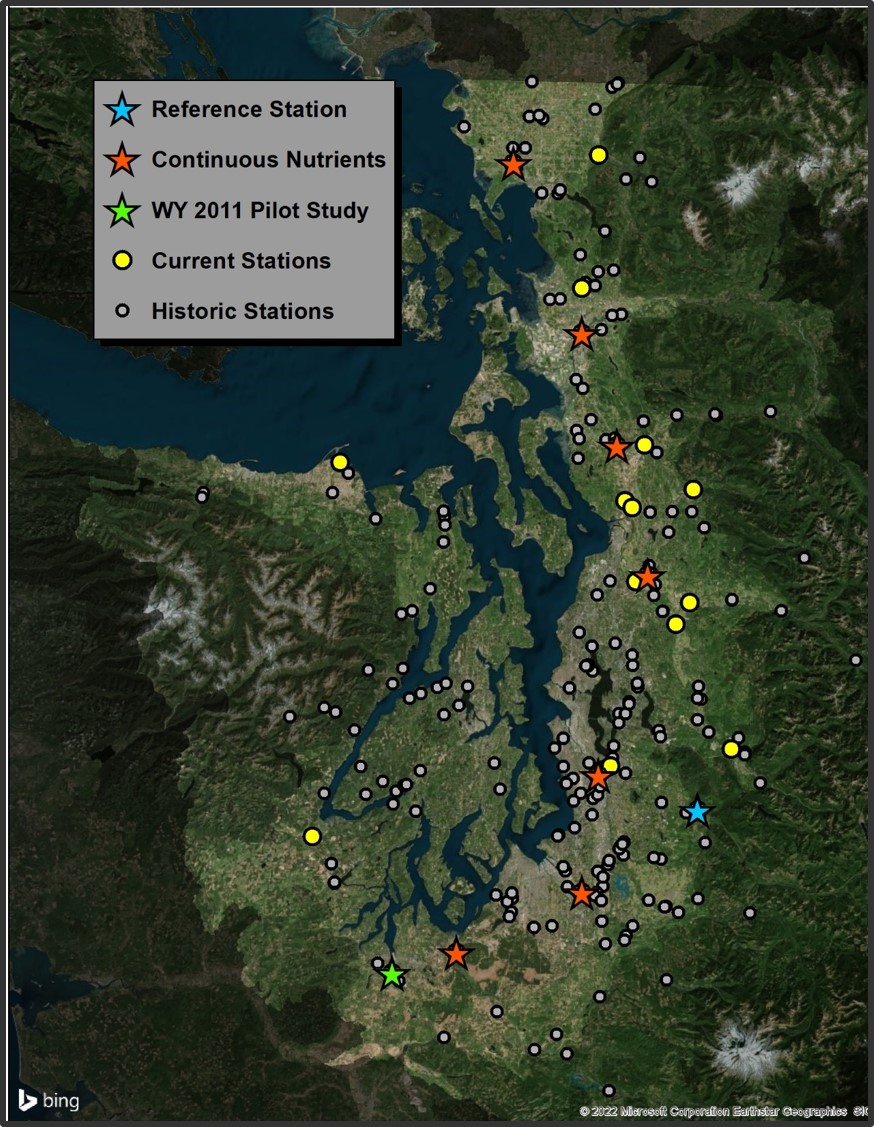
By Markus Von Prause and Dan Dugger
Protecting and restoring Puget Sound is critical to Washington's environment and a priority for our scientists. Our science team monitors conditions and pollution. We recently installed eight river monitors to help us detect where pollution affecting the Sound comes from.
In our Ambient Water Quality Monitoring Project, we collect monthly samples in major streams to monitor pollution that impacts Puget Sound communities and aquatic life. This gives us a monthly snapshot of nutrient conditions in Puget Sound.
This is good information, but Puget Sound water quality — which is influenced by nutrient loads and sunlight — changes every hour. To determine the causes of poor water quality, we need to know:
- How much nutrient pollution these rivers deliver daily into Puget Sound throughout the year.
- How much rare events, like storms, affect water quality.
Continuous monitoring stations collect data every 15 minutes, 365 days per year, and send the data through satellite telemetry to Ecology’s website within a few hours.
At a few stations, we already measure continuous dissolved oxygen and pH. These are symptoms of poor water quality caused by nutrients. Now, with new technology, we can also measure nitrate — an indicator nutrient — every 15 minutes, year-round.
Having continuous nitrate data will allow us to directly assess the cause of poor water quality, and not just
We conducted pilot studies in the Deschutes River and Chehalis basins, south of Olympia, to prove our ability to reliably measure nutrients.
This summer we will begin continuous nutrient monitoring at eight stations. The sites include seven key confluences with rivers entering Puget Sound (the red star sites on the map and one reference site in the Cedar River watershed, the blue star on the map).
About Ecology at Work
As Washington’s environmental protection agency, we are deeply committed to protecting, preserving, and enhancing Washington’s environment for current and future generations.
Through innovative partnerships, we are able to protect and sustain healthy land, air, and water in harmony with a strong economy. And we take great care to develop strategic plans that have a broad and holistic approach to what we do and how we do it.
Protecting and restoring Puget Sound is part of our strategic plan.


